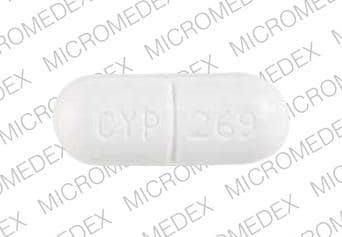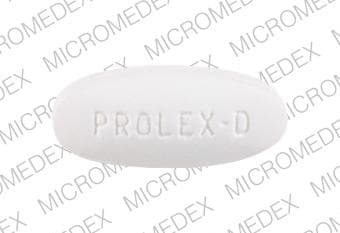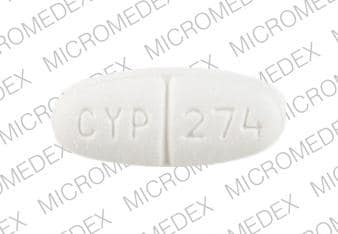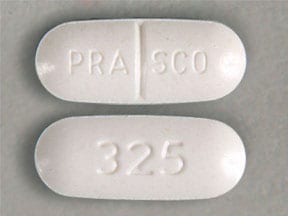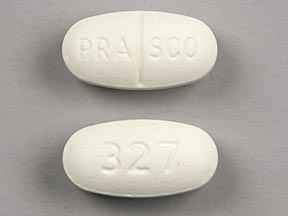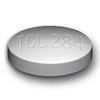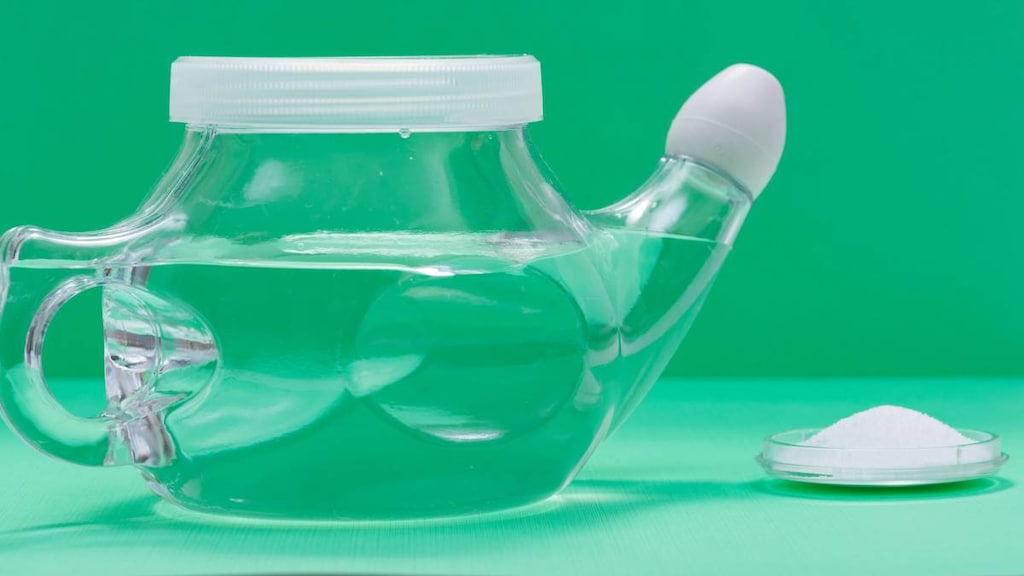Dosage Forms
Excipient information presented when available (limited, particularly for generics); consult specific product labeling. [DSC] = Discontinued product
Liquid, oral:
Ed Bron GP: Guaifenesin 100 mg and phenylephrine hydrochloride 5 mg per 5 mL (480 mL) [dye free, ethanol free, sugar free; contains propylene glycol; orange flavor]
Mucinex Children's Stuffy Nose & Cold: Guaifenesin 100 mg and phenylephrine hydrochloride 2.5 mg per 5 mL (118 mL) [contains edetate disodium, fd&c red #40, propylene glycol, and sodium benzoate; mixed berry flavor]
Nu-COPD: Guaifenesin 200 mg and phenylephrine hydrochloride 10 mg per 5 mL (480 mL [DSC])
Rescon GG: Guaifenesin 100 mg and phenylephrine hydrochloride 5 mg per 5 mL (120 mL [DSC], 480 mL [DSC]) [dye free, ethanol free; contains propylene glycol; wild cherry flavor]
Syrup, oral:
J-Max: Guaifenesin 200 mg and phenylephrine hydrochloride 5 mg per 5 mL (473 mL [DSC]) [ethanol free, sugar free; contains propylene glycol; strawberry cream flavor]
Triaminic® Children's Chest & Nasal Congestion: Guaifenesin 50 mg and phenylephrine hydrochloride 2.5 mg per 5 mL (118 mL) [contains benzoic acid, propylene glycol, sodium 3 mg/5 mL; tropical flavor]
Tablet, oral:
Ambi 10PEH/400GFN: Guaifenesin 400 mg and phenylephrine hydrochloride 10 mg
Deconex IR: Guaifenesin 385 mg and phenylephrine hydrochloride 10 mg [contains tartrazine]
Fenesin PE IR: Guaifenesin 400 mg and phenylephrine hydrochloride 10 mg
Gcon IR: Guaifenesin 385 mg and phenylephrine hydrochloride 10 mg
Medent®-PEI: Guaifenesin 400 mg and phenylephrine hydrochloride 10 mg
MucaphEd: Guaifenesin 400 mg and phenylephrine hydrochloride 10 mg [DSC]
Mucus Relief Sinus: Guaifenesin 400 mg and phenylephrine hydrochloride 10 mg
Nu-COPD: Guaifenesin 400 mg and phenylephrine hydrochloride 10 mg
OneTab™ Congestion & Cold: Guaifenesin 400 mg and phenylephrine hydrochloride 10 mg
Refenesen™ PE: Guaifenesin 400 mg and phenylephrine hydrochloride 10 mg
Relcof IR: Guaifenesin 380 mg and phenylephrine hydrochloride 10 mg [DSC]
Sudafed PE® Non-Drying Sinus: Guaifenesin 200 mg and phenylephrine hydrochloride 5 mg [DSC]
Pharmacology
Mechanism of Action
See individual agents.
Use: Labeled Indications
Expectorant/decongestant: Temporary relief of nasal congestion, sneezing, nasal/throat irritation, and itchy/watery eyes associated with common cold, hay fever, or other respiratory allergies; loosens mucus and thins bronchial secretions making coughs more productive; reduces swelling of nasal passages
Contraindications
Concurrent administration with or within 2 weeks of discontinuing an MAO inhibitor
Guaifenesin and Phenylephrine Images
Dosage and Administration
Dosing: Adult
Also refer to specific product labeling.
Expectorant/decongestant: Oral:
Liquid (Ed Bron GP): Guaifenesin 200 mg/phenylephrine 10 mg (10 mL) every 4 hours; maximum: guaifenesin 1,200 mg/phenylephrine 60 mg (60 mL)/24 hours
Tablet (Deconex IR): Guaifenesin 385 mg/phenylephrine 10 mg (1 tablet) every 4 hours; maximum: 6 tablets/24 hours
Dosing: Geriatric
Refer to adult dosing.
Dosing: Pediatric
Cold/allergy symptoms: Note: Multiple concentrations of oral liquid formulations and solid oral dosage forms exist; close attention must be paid to the concentration when ordering or administering.
Liquid:
Guaifenesin 100 mg and phenylephrine 2.5 mg per 5 mL (eg, Mucinex Children's Stuffy Nose and Cold):
Children ≥4 years to <6 years: Oral: 5 mL every 4 hours; maximum daily dose: 30 mL/24 hours
Children ≥6 years to <12 years: Oral: 10 mL every 4 hours; maximum daily dose: 60 mL/24 hours
Guaifenesin 100 mg and phenylephrine 5 mg per 5 mL (eg, Ed Bron GP):
Children ≥6 years to <12 years: Oral: 5 mL every 4 hours; maximum daily dose: 30 mL/24 hours
Children ≥12 years and Adolescents: Oral: 10 mL every 4 hours; maximum daily dose: 60 mL/24 hours
Tablet:
Guaifenesin 385 mg and phenylephrine 10 mg per tablet (eg, Deconex IR):
Children ≥6 years to <12 years: Oral: 1/2 tablet every 4 hours; maximum daily dose: 3 tablets/24 hours
Children ≥12 years and Adolescents: Oral: 1 tablet every 4 hours; maximum daily dose: 6 tablets/24 hours
Guaifenesin 400 mg and phenylephrine 10 mg per tablet (eg, Mucus Relief D): Children ≥12 years and Adolescents: Oral: 1 tablet every 4 hours; maximum daily dose: 6 tablets/24 hours
Dietary Considerations
May be taken with or without food. Taking with food, water or milk may help decrease gastric irritation. Some products may contain sodium.
Drug Interactions
Acetaminophen: May increase the serum concentration of Phenylephrine (Systemic). Monitor therapy
Alpha1-Blockers: May diminish the vasoconstricting effect of Alpha1-Agonists. Similarly, Alpha1-Agonists may antagonize Alpha1-Blocker vasodilation. Monitor therapy
AtoMOXetine: May enhance the hypertensive effect of Sympathomimetics. AtoMOXetine may enhance the tachycardic effect of Sympathomimetics. Monitor therapy
Benzylpenicilloyl Polylysine: Alpha1-Agonists may diminish the diagnostic effect of Benzylpenicilloyl Polylysine. Management: Consider use of a histamine skin test as a positive control to assess a patient's ability to mount a wheal and flare response. Consider therapy modification
Cannabinoid-Containing Products: May enhance the tachycardic effect of Sympathomimetics. Exceptions: Cannabidiol. Monitor therapy
Chloroprocaine: May enhance the hypertensive effect of Phenylephrine (Systemic). Monitor therapy
CloZAPine: May diminish the therapeutic effect of Phenylephrine (Systemic). Monitor therapy
Cocaine (Topical): May enhance the hypertensive effect of Sympathomimetics. Management: Consider alternatives to use of this combination when possible. Monitor closely for substantially increased blood pressure or heart rate and for any evidence of myocardial ischemia with concurrent use. Consider therapy modification
Doxofylline: Sympathomimetics may enhance the adverse/toxic effect of Doxofylline. Monitor therapy
Ergot Derivatives: May enhance the hypertensive effect of Alpha1-Agonists. Ergot Derivatives may enhance the vasoconstricting effect of Alpha1-Agonists. Exceptions: Ergoloid Mesylates; Nicergoline. Avoid combination
FentaNYL: Alpha1-Agonists may decrease the serum concentration of FentaNYL. Specifically, fentanyl nasal spray serum concentrations may decrease and onset of effect may be delayed. Monitor therapy
Guanethidine: May enhance the arrhythmogenic effect of Sympathomimetics. Guanethidine may enhance the hypertensive effect of Sympathomimetics. Monitor therapy
Hyaluronidase: May enhance the vasoconstricting effect of Phenylephrine (Systemic). Management: Avoid the use of hyaluronidase to enhance dispersion or absorption of phenylephrine. Use of hyaluronidase for other purposes in patients receiving phenylephrine may be considered as clinically indicated. Avoid combination
Iobenguane Radiopharmaceutical Products: Alpha1-Agonists may diminish the therapeutic effect of Iobenguane Radiopharmaceutical Products. Management: Discontinue all drugs that may inhibit or interfere with catecholamine transport or uptake for at least 5 biological half-lives before iobenguane administration. Do not administer these drugs until at least 7 days after each iobenguane dose. Avoid combination
Ioflupane I 123: Phenylephrine (Systemic) may diminish the diagnostic effect of Ioflupane I 123. Monitor therapy
Linezolid: May enhance the hypertensive effect of Sympathomimetics. Management: Reduce initial doses of sympathomimetic agents, and closely monitor for enhanced pressor response, in patients receiving linezolid. Specific dose adjustment recommendations are not presently available. Consider therapy modification
Monoamine Oxidase Inhibitors: May enhance the hypertensive effect of Alpha1-Agonists. While linezolid is expected to interact via this mechanism, management recommendations differ from other monoamine oxidase inhibitors. Refer to linezolid specific monographs for details. Exceptions: Linezolid. Avoid combination
Propacetamol: May increase the serum concentration of Phenylephrine (Systemic). Management: Monitor patients closely for increased side effects of phenylephrine if propacetamol is used concomitantly. Patients with underlying blood pressure issues or arrhythmias may need closer monitoring and may warrant consideration of alternative therapies. Monitor therapy
Solriamfetol: Sympathomimetics may enhance the hypertensive effect of Solriamfetol. Monitor therapy
Sympathomimetics: May enhance the adverse/toxic effect of other Sympathomimetics. Monitor therapy
Tedizolid: May enhance the hypertensive effect of Sympathomimetics. Tedizolid may enhance the tachycardic effect of Sympathomimetics. Monitor therapy
Tricyclic Antidepressants: May enhance the therapeutic effect of Alpha1-Agonists. Tricyclic Antidepressants may diminish the therapeutic effect of Alpha1-Agonists. Monitor therapy
Adverse Reactions
See individual agents.
Warnings/Precautions
Disease-related concerns:
- Cardiovascular disease: Use with caution in patients with cardiovascular disease (including hypertension and ischemic heart disease); contraindicated with severe disease.
- Diabetes: Use with caution in patients with diabetes mellitus.
- Increased intraocular pressure/glaucoma: Use with caution in patients with increased intraocular pressure or glaucoma.
- Prostatic hyperplasia/urinary obstruction: Use with caution in patients with prostatic hyperplasia and/or GU obstruction.
- Thyroid dysfunction: Use with caution in patients with thyroid dysfunction.
Special populations:
- Elderly: Use with caution in the elderly; may be more sensitive to adverse effects.
Dosage form specific issues:
- Benzyl alcohol and derivatives: Some dosage forms may contain sodium benzoate/benzoic acid; benzoic acid (benzoate) is a metabolite of benzyl alcohol; large amounts of benzyl alcohol (≥99 mg/kg/day) have been associated with a potentially fatal toxicity (“gasping syndrome”) in neonates; the “gasping syndrome” consists of metabolic acidosis, respiratory distress, gasping respirations, CNS dysfunction (including convulsions, intracranial hemorrhage), hypotension, and cardiovascular collapse (AAP ["Inactive" 1997]; CDC 1982); some data suggest that benzoate displaces bilirubin from protein binding sites (Ahlfors 2001); avoid or use dosage forms containing benzyl alcohol derivative with caution in neonates. See manufacturer's labeling.
- Propylene glycol: Some dosage forms may contain propylene glycol; large amounts are potentially toxic and have been associated hyperosmolality, lactic acidosis, seizures, and respiratory depression; use caution (AAP ["Inactive" 1997]; Zar 2007).
Other warnings/precautions:
- Cough: Appropriate use: Underlying cause of cough should be determined prior to prescribing.
Pregnancy
Pregnancy Considerations
See individual agents.
Patient Education
- Discuss specific use of drug and side effects with patient as it relates to treatment. (HCAHPS: During this hospital stay, were you given any medicine that you had not taken before? Before giving you any new medicine, how often did hospital staff tell you what the medicine was for? How often did hospital staff describe possible side effects in a way you could understand?)
- Patient may experience dizziness, anxiety, trouble sleeping, or fatigue (HCAHPS).
- Educate patient about signs of a significant reaction (eg, wheezing; chest tightness; fever; itching; bad cough; blue skin color; seizures; or swelling of face, lips, tongue, or throat). Note: This is not a comprehensive list of all side effects. Patient should consult prescriber for additional questions.
Intended Use and Disclaimer: Should not be printed and given to patients. This information is intended to serve as a concise initial reference for healthcare professionals to use when discussing medications with a patient. You must ultimately rely on your own discretion, experience and judgment in diagnosing, treating and advising patients.
